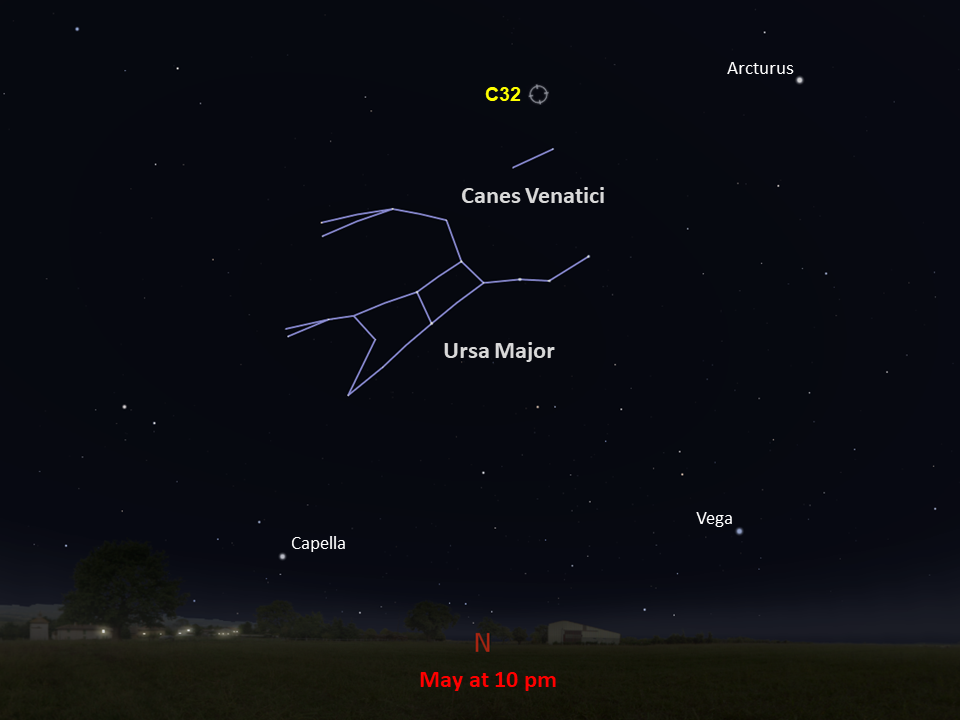Caldwell 32
One of the brighter Caldwell galaxies, Caldwell 32 is similar to our own Milky Way.
Distance
25 million light-years
Apparent Magnitude
9.2
constellation
Canes Venatici
object type
Barred Spiral Galaxy

This stream of stars embedded in cosmic clouds is part of Caldwell 32, also cataloged as NGC 4631 and commonly called the Whale Galaxy. Our edge-on view of this galaxy masks the spiral arms that extend outward into space, each overflowing with sparkling stars. The “belly” of the whale (on the left side of the image) is the galactic center, which is lit up by stars bursting into life along with gas that has been heated from supernova explosions. This bright light silhouettes bands of dense, darker material that lie between us and the Whale galaxy’s bright core.
This Hubble image, taken with the Advanced Camera for Surveys, shows an area that is about 140,000 light-years across. Hubble’s observations provide the opportunity to explore this galaxy in visible and near-infrared light, which, combined with X-ray observations from other telescopes, allow scientists to develop a more complete picture of ongoing galactic processes.
Similar in size to the Milky Way, the Whale Galaxy is a located about 25 million light-years away in the Canes Venatici constellation. It is one of the many Caldwell objects discovered by astronomer William Herschel. It has a magnitude of 9.2, requiring large binoculars or a telescope to see it. As one of the brighter Caldwell galaxies, it is a favorite among observers. Spring skies in the Northern Hemisphere (or autumn in the Southern Hemisphere) will provide an optimal view of the Whale galaxy.
For more information about Hubble’s observations of Caldwell 32, see:
The Belly of the Cosmic Whale


Glossary
Magnitude - The brightness of an astronomical object, represented by a number; bright objects have low numbers on the magnitude scale, while dim objects have high numbers.
Supernova - The explosion of a massive star at the end its life, which ejects material into space and causes the star to temporarily brighten in our sky.
Explore Hubble's Caldwell Catalog
The following pages contain some of Hubble’s best images of Caldwell objects.

Caldwell 1
Also known as NGC 188, this group of stars formed from a large cloud of gas making the stars roughly…

Caldwell 2
This shell of gas is expanding outward, away from the dying star within.

Caldwell 3
This barred spiral galaxy was first spotted by British astronomer William Herschel in April 1793 in the constellation Draco.




